How to fit skirting boards
Skirting boards are used to cover the joint where the wall and the floor meet each other, and depending on the nature of your project, you will either be replacing the skirting in a room or fitting new skirting as part of a room makeover. If you’re wanting to add both architrave and skirting, then it’s a good idea to match the styles for a consistent look.
Skirting boards come in a variety of different materials, such as primed MDF, fully finished MDF, softwood and hardwood. MDF skirting doesn’t need sanding, but if you’re using softwood or hardwood boards, they may need lightly sanding and treating before fitting.
Don’t leave a gap underneath the skirting boards, if you’re having a carpeted floor, then fit the skirting boards first. But if you’re laying down a wooden floor, fit the skirting boards afterwards.
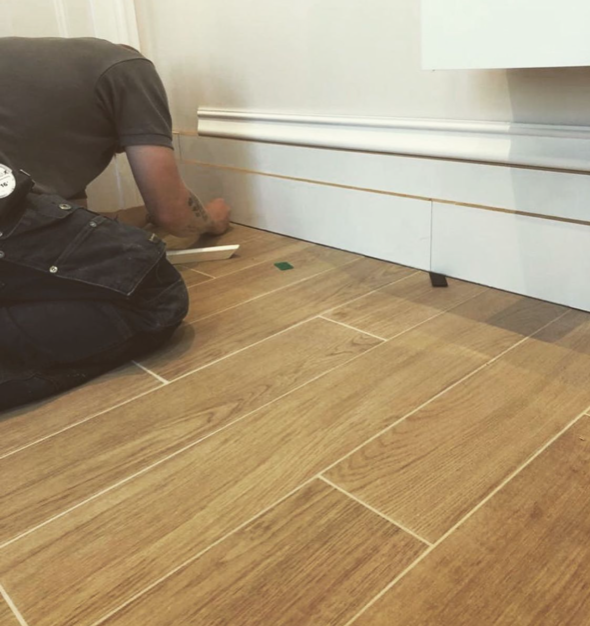
@made2measure_interiors
How do I cut and measure skirting boards?
When cutting skirting boards, you will need to know the best way to join them at the corners. External corners face outwards, whereas internal corners face inwards. Each corner needs a different cut for the best results.
- Mitre joints are used for external corners. The boards are cut at 45 degree angles, so they fit nicely and tightly around the corner.
- Scribe joints are used for internal corners. One of the boards is cut square then the other board is cut – or ‘scribed’ – which helps to minimise the risk of gaps forming if the skirting shrinks after fitting.
Remember that when you’re planning to fit new skirting, start from the left-hand side of the door and work anti-clockwise around the room. This is to ensure that the square cut piece on an internal corner is always cut and fitted before the scribed piece. Make sure it’s clear which cuts are needed for each skirting grid!
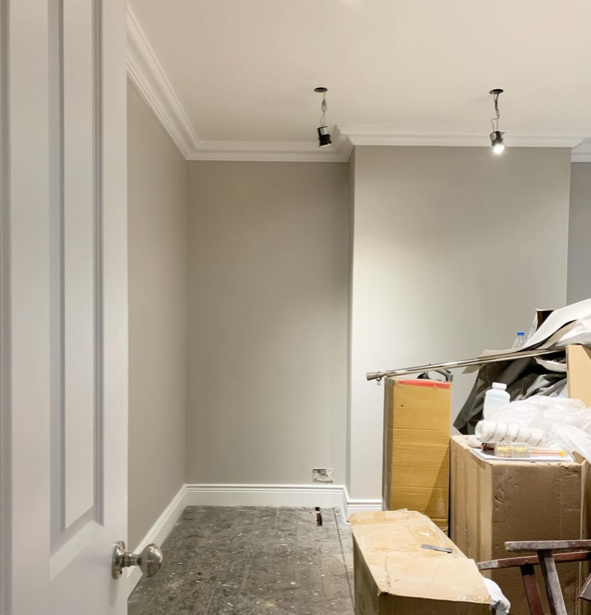
@the_cyclists_abode
How to fit skirting boards – Step by Step
Step 1 - Detect any hidden pipes
Before fixing anything to the walls, use a pipe and cable detector to check for hidden pipes and electric cables. Be sure to follow according to the manufacturer’s instructions.
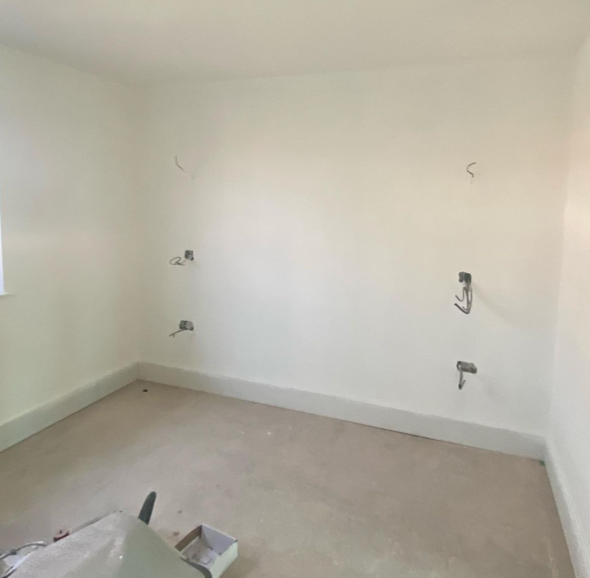
@renovating_with_reynolds
Step 2 - Mark position of studs
If you’re fitting skirting to a stud wall, then use a stud detector to locate the vertical timber studs behind the plasterboard. Mark the centre position of the studs on the skirting so you know where to hammer the nails.

@craftsman
Step 3 - Apply adhesive
To fix the skirting board, apply grab adhesive to the back of the skirting and then press the board firmly to the wall and quickly wipe off any overspill. If the wall is perfectly flat, you may not need any other fixings. If your wall has a bow in it, you may need other screws or fixings to tighten up the skirtings.

@moochstyle
Step 4 - Drill the skirting
If you’re fixing the skirting to a masonry wall, then use a 6mm masonry drill bit to drill through the skirting and into the wall. Start the holes 50mm from the end of the wall and position each one 25mm from the top and bottom of the skirting. Repeat this pattern at 500mm along the length of the skirting and countersink the holes so that the screws will be hidden, i.e., the screw head sits below the surface of the skirting.
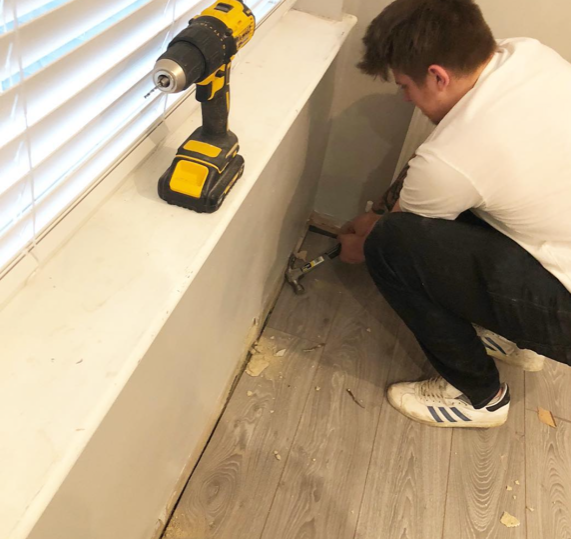
@mrs.lewis.home
Step 5- Screw in
Insert a 6mm wall plug and an 8-gauge screw, tapping into place until you feel resistance. Then, screw until the head is below the surface of the skirting.
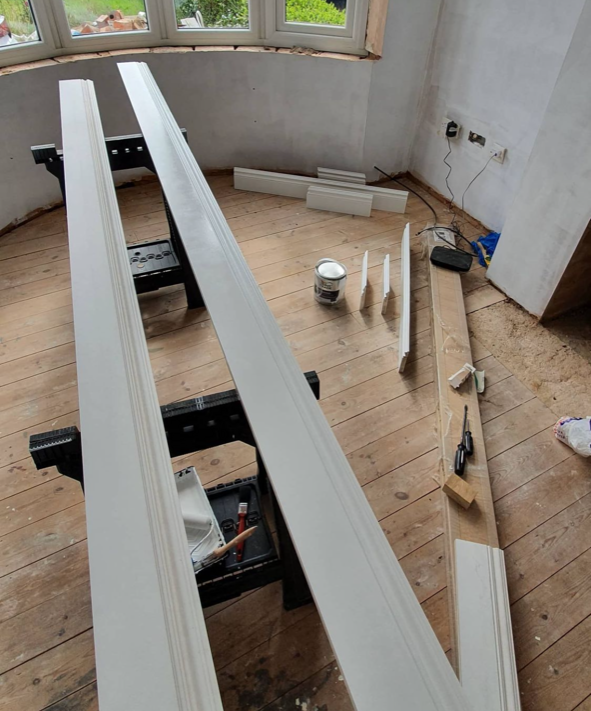
@mayfield_reno
Step 6 - Hammer in
If you’re fixing the skirting to a stud wall, then hammer two 40mm lost head nails through the skirting into the centre of each timber stud. Use a hammer and nail stud to push the nails below the surface of the skirting.
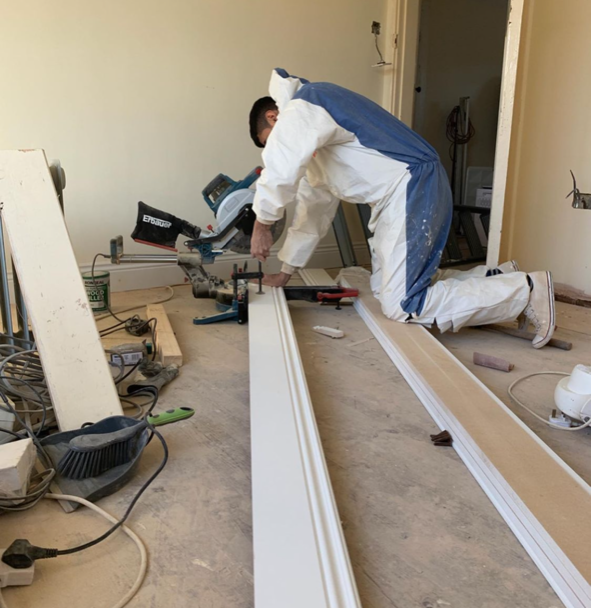
@1993.home
Step 7 - Glue joints
When fitting and securing an external joint, apply PVA glue to the face of each mitre cut.
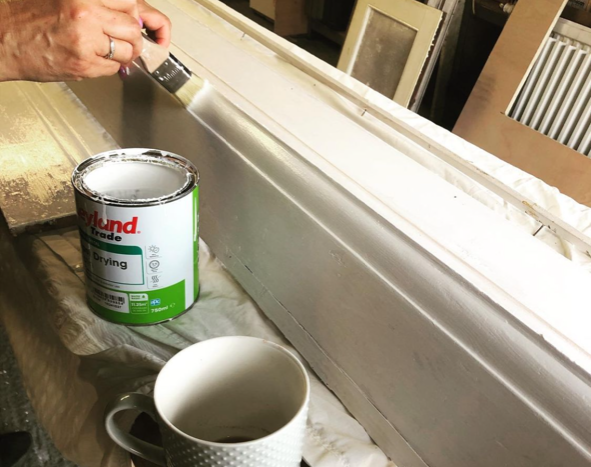
@my_tiny_terrace
Step 8 - Fit square cut section
When securing the internal joints, the square cut section is always fitted first, so simply align the scribed section and secure the board. No PVA glue is required for internal joints.
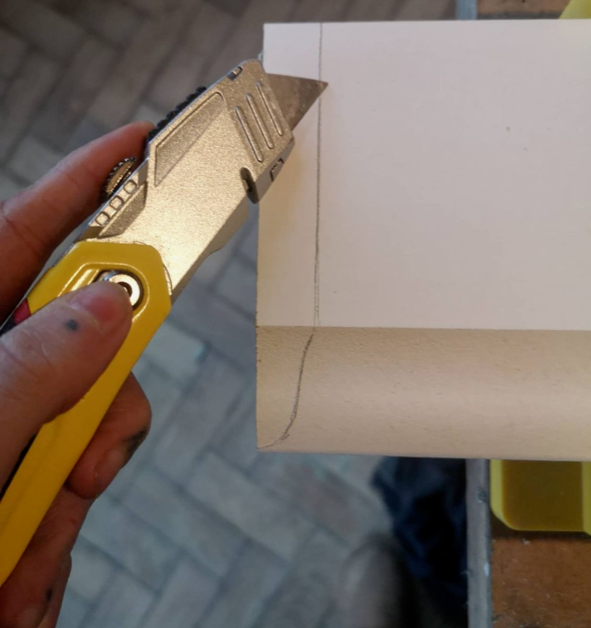
@thequirkylodge
Step 9 - Seal off gaps
Using a cartridge gun, apply flexible decorators caulk to the top of the skirting to seal off and fill any small gaps between the skirting and the wall. Smooth the surface and wipe away any excess with a damp cloth.

@homebuiltproject
Step 10 - Fill screw holes and sand
Finally, all countersunk nails and screws should be filled with caulk and sanded down. Now the skirting is ready to paint!
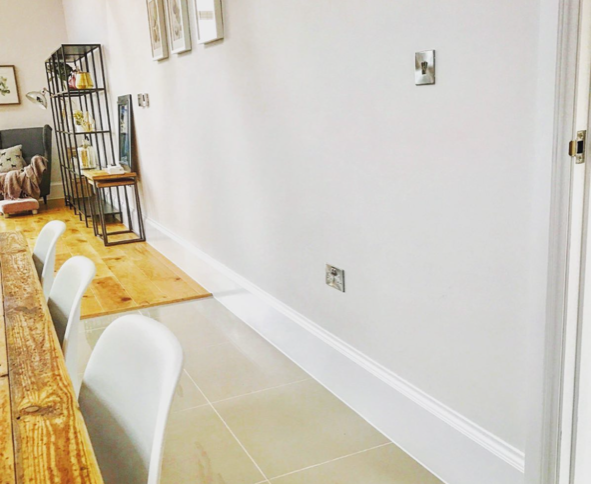
@skirting4you
If you have any questions about how to fit skirting boards or need further information about the products we sell at Howarth, please visit your local friendly Howarth branch, or contact our customer services team on the number 01472 907051.
Recent Posts
-
Forest Garden’s top tips for bringing style to small outdoor spaces
Spring is finally here, and homeowners are keen to transform even the smallest of outside areas
-
5 Creative Gravel Driveway Ideas
Are you looking to update your driveway and give your home an updated and appealing look? Look

